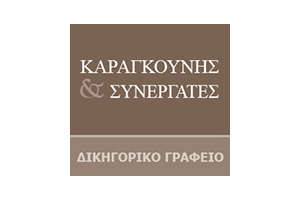
The solution that ensures fast, secure and optimal performance at any department or business that manages overdue debts
The application Thesis Collection consists of two basic modules and 1 separate subsystem for the informative printouts of the system. The base modules of the application are:
Bank customer receivables: The particulars of debtors, guarantors and additional members involved in the cases are recorded. Also, data of individuals directly associated with each debtor are recorded (e.g. multiple telephone numbers, relatives) but not with a specific case. Each record gets automatic numbering by the system. The user enters the basic information of the record (debtor, bank, product particulars). For each record the basic operator is specified but up to two additional operators can be entered. Assignment can also be done dynamically based on specific rules (e.g. whether or not the operator has handled cases of the same individual, depending on allocation depending on the amounts claimed etc). Where there is financial information about a given product (e.g. current capital, interest on capital, number of installments, costs) it can be entered by opening the recored or completed at a later stage. From this point, users are able to enter actions about the record and the corresponding result of each action. The system is automatically updated with the time and date of the entry. Further, notes (memos) can be entered as free text, as well as alerts for subsequent actions. It is also possible to mass generate documents, customized depending on the data of each recipient. Lastly, the program covers daily and bi-directional information via ASCII files between Bank and Office systems as per the specifications established by each bank.
Receivables from customers of insurance companies, private businesses: Insurance companies (customers of the Office) and the details of parties insured with them are entered. For each company (insurance or insured) information of contacts (of individuals) can be entered to facilitate transactions with them.
For each debtor information of contacts (individuals) can be entered. Regarding records, the same things apply as in the case of “Receivables from bank customers”, with the only difference that there is no automation with new record and actions entries through the send of ASCII files. Full payment transactions for the amounts due are also recorded and the program automatically calculates the current balance based on the payments made. Lastly, in a similar manner are recorded comments, reminders or actions taken or to be taken in the future regarding each specific case.
Where required, the application automatically interfaces with Thesis Law Office for law offices and each Thesis Collection record connects with the corresponding record of general law practice.






